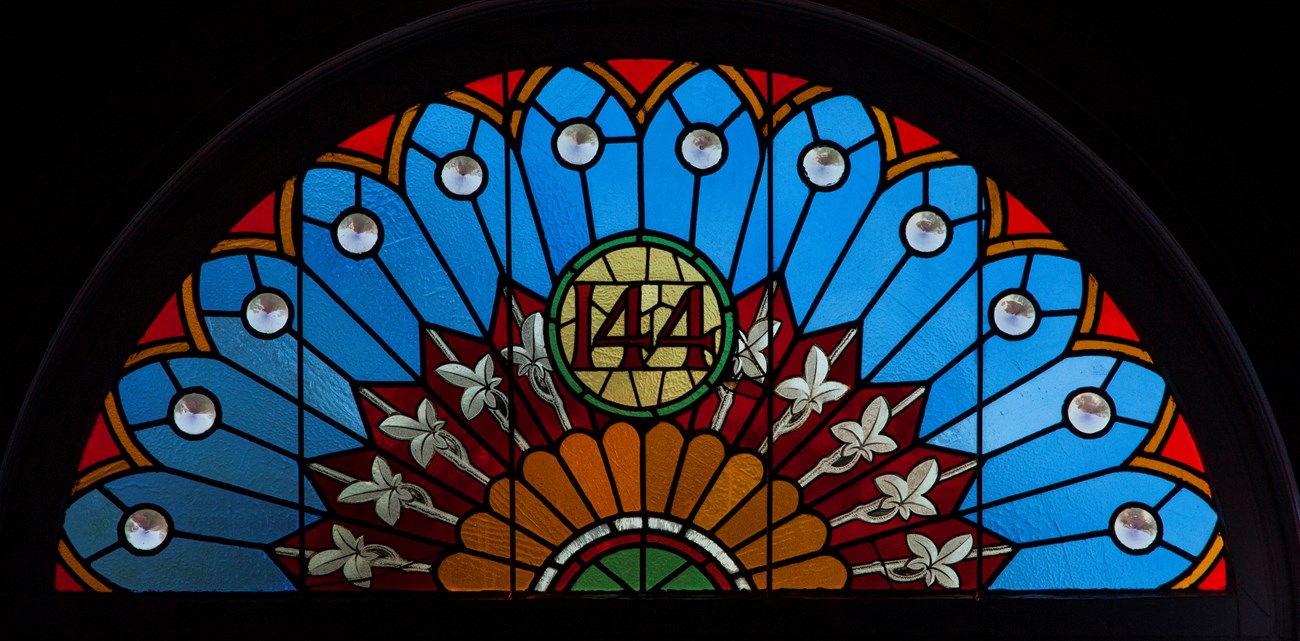Last updated: April 12, 2024
Article
National Park Getaway: Belmont-Paul Women's Equality National Monument

NPS/ Marcey Frutchey
Be inspired by the courage, sacrifices, and persistence of the women who fought for equality and the full rights of citizenship! Tucked away on Capitol Hill near the Supreme Court and United States Capitol, Belmont-Paul Women’s Equality National Monument tells the story of the fight for the 19th Amendment to the US Constitution that granted American women the right to vote, and the ongoing fight for equality. Named for suffragists Alva Belmont and Alice Paul, the site houses an unparalleled collection of women’s suffrage artifacts. Whether you take one of the guided tours or explore the house on your own, you will be immersed in history of the largest civil rights movement in America.
While the inside of the house is filled with exhibits and artifacts, the entry hall still looks much the same as it did when Alice Paul lived and worked in the house. The iconic, recently restored stained glass fan window lights up the space and illuminates the busts and portraits of the many heroes who fought for equality.

National Woman’s Party
Flip through the “Deadly Political Index” and discover some of the strategies the members of the National Woman’s Party used to push for political change. Whether it was all-women automobile tours or being the first to picket the White House, the members of the National Woman’s Party constantly sought new ways to draw attention to their fight for voting rights. Artwork, photographs, banners, and cartoons display their determination and creativity. A skeleton key smuggled out of the district jail and a jail door–shaped pin testify to the courage of the women who sacrificed their freedom to win the vote.

National Woman’s Party
Follow the twists and turns of the final push to make the Susan B. Anthony Amendment the 19th Amendment to the US Constitution. Hear how one vote made Tennessee the 36th and final state needed to ratify it in time for women to participate in the 1920 presidential election.
Discover how the National Woman's Party continued to push for equality in the United States and the world even after winning the vote. Following the introduction of the Equal Rights Amendment (ERA) in 1923, the National Woman's Party worked for almost 50 years to have the amendment passed by Congress, only to have it fall three states short of ratification when the legislation expired in 1982. Explore the similarities between the anti-suffrage movement and the Stop ERA campaign that blocked its ratification before the 1982 deadline.
Throughout the year, Belmont-Paul Women's Equality National Monument hosts a number of events including special programs for Women's History Month in March and Women's Equality Day in August. The Junior Suffragist program is available year round.
Belmont-Paul Women's Equality National Monument is open Wednesdays through Sundays from 9 am to 5 pm, except for Thanksgiving and Christmas. The site is accessible, easily reached from Capitol South or Union Station Metro stops, and charges no entrance fee.
A project through the Save America's Treasures Grant Program, which helps preserve nationally significant historic properties and collections that convey our nation’s rich heritage to future generations, funded work to rehabilitate the Sewall-Belmont House in 1999 when it was managed by the National Women's Party.
Tags
- belmont-paul women's equality national monument
- women's history
- telling all americans stories
- women’s rights
- women’s suffrage
- womens history month
- washington d.c.
- national park getaways
- 19th amendment
- us constitution
- belmont-paul
- historic preservation fund
- national register of historic places
- nrhp
- historic preservation grants
- save americas treasures
- success story
